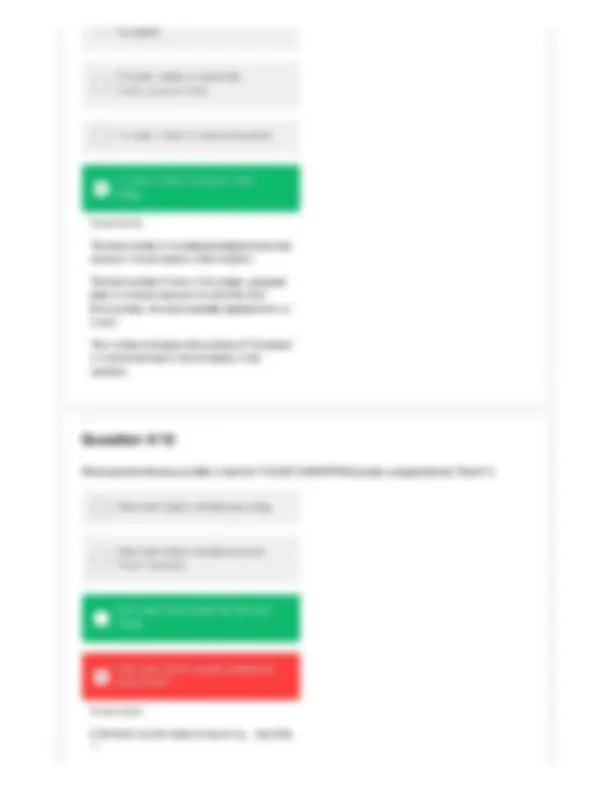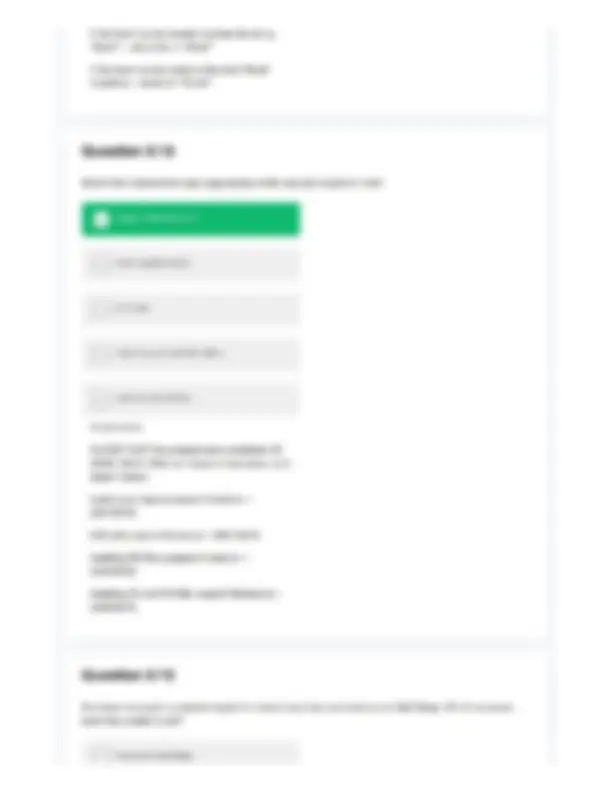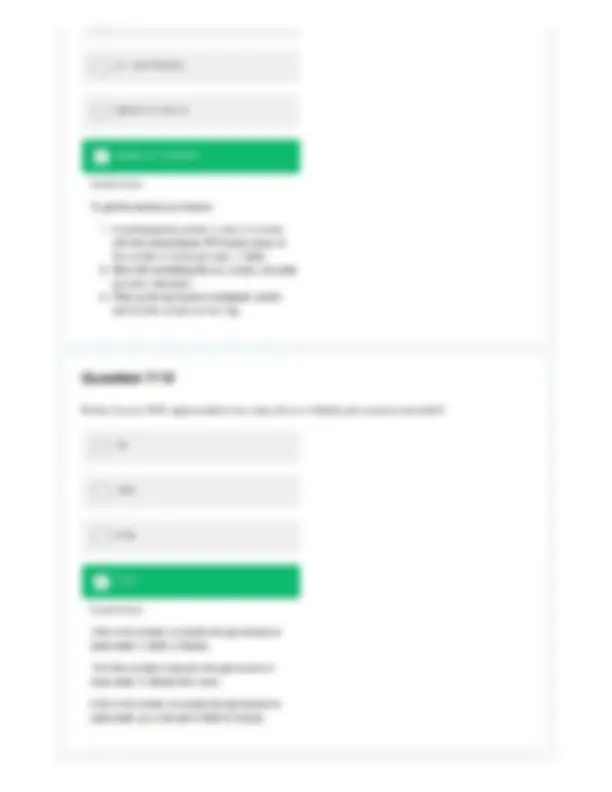Partial preview of the text
Download Data science data analytics answer integrated project visualising maji ndogo part 4 and more Exams Data Acquisition in PDF only on Docsity!
Integrated project (Visualising): Maji Ndogo part 4 [MCQ] (Version : 0) TEST @ Correct Answer © Answered in 1012.2333333333 Minutes Question 1/10 Which type of improvement (aggregated improvement) accounts for the largest cost in Amanzi? (_) Drill weit ) Installing UV and RO filters ‘oe Installing RO filters Explanation: Drill well — 19% of the budget; Installing public taps accounts for 43% of the budget. Installing RO filters — 23% of the budget; Installing public taps accounts for 43% of the budget. Installing UV and RO filters — 8% of the budget; Installing public taps accounts for 43% of the budget. Question 2/10 This given plot represents the net balance which is [cumulative budget] - [cumulative_cost] plotted aver time (continuous): [Net budget over time sa ee = feumu.ative budge} feu: eee st] What is the significance of the change in the slope in January 2024? The number of teams was reduced O significantly, so fewer jobs were completed. Improvements in Sokoto stopped, oe reducing costs. —, All well drilling was completed, meaning L) less spending per source on average. Teams started travelling less, reducing and keeping teams on budget. Explanation: All well drilling completed... is incorrect because wells were continually drilled until 2027. Improvements in Sokoto stopped... is incorrect because 4,000 jobs still had to be completed. The number of teams was reduced... because no teams were fired. Question 3/10 In the context of the Maji Ndogo water source improvement project, what would COUNTROWS(‘project_progress’) in a DAX formula represent in the real world? The number of projects with a status of If the ‘town’ column exactly matches the string "Rural"... would be == "Rural*" If the ‘town’ column contains the word "Rural" anywhere... would be "*Rural”™" Question 5/10 What is the improvement type (aggregated) of the very last project to finish? ( ’) Install public tap(s) ‘oe Drill well C-) Installing UV and RO filters eo) Installing RO filters Explanation: On 2027-12-07 two projects were completed. ID: 25292, 25373. Both are Repair infrastructure, so it doesn’t matter. Install public tap(s) projects finished on — 2027/03/05. Drill well projects finished on — 2027/09/19. Installing RO filter projects finished on — 2025/09/28. Installing UV and RO filter projects finished on — 2026/09/16. Question 6/10 One team managed to complete repairs in almost every town and rural area in Maji Ndogo. Which two towns were they unable to visit? (_} Harare-K and Deka C) Zuri and Mrembo a) Bahari and Amara Explanation: To get the answer you have to: 1. Count(assigned_vendor) to see the vendor with the most projects OR Count(unique) of the number of towns per team. (Table) 2. Map with something like pct_project_complete as colour saturation. 3. Filter by the top Count of assigned_vendor and find the answer on the map. Question 7/10 During the year 2025, approximately how many citizens in Sokoto got access to new wells? 1M ‘e 735k 616k Explanation: 735k is the number of people who got access to basic water in 2025 in Sokoto. 1Mis the number of people who got access to basic water in Sokoto from wells. 616k is the number of people who got access to basic water up to the end of 2025 in Sokoto. In the first year, Sokoto improved basic access by 17.49% Students can either calculate this by hand or create a pe_access_to_water_% measure (starting % access) and subtract it from the percentage access up to 2023/12/31. Amanzi improved by 17.47% Hawassa improved by 16.31%. Akatsi improved by 10.2% Question 10/10 Which water purification system installation team recorded the lowest average cost across all urban areas in all provinces excluding Kilimani? ie KFS818 ‘e ERI893 ‘eo LRI858 Explanation: Students will have to filter their EDA data to get to the answer. Students may assume it is ERI893 which is true across all urban areas, bul once you include Kilimani, TUS835 beats them. ERI893 has the second-lowest average cost. KFS818 has the third-lowest, or the lowest average cost if urban is not specified. LRI858 has the fourth-lowest average cost. 















